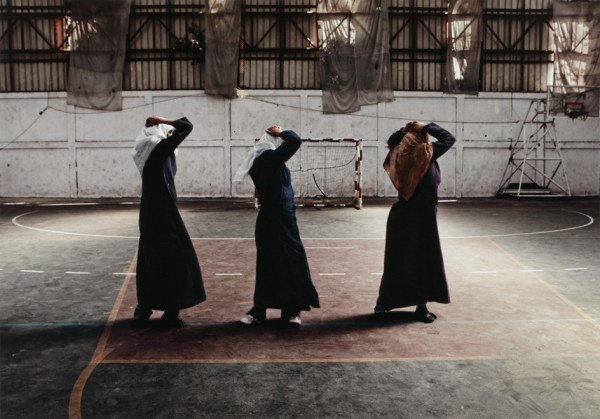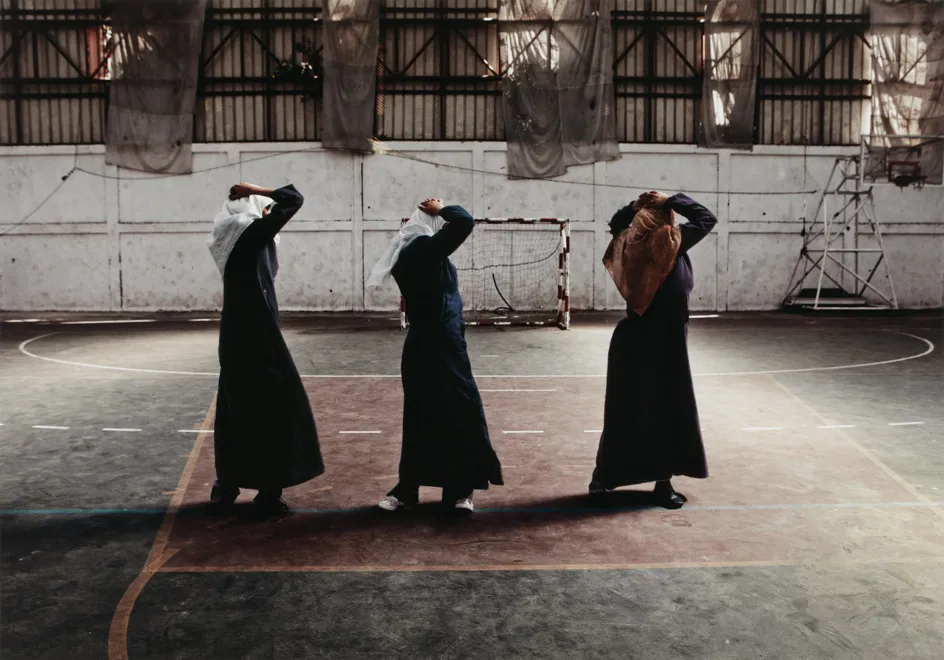
On view until May 4, “She Who Tells a Story” is a new Cantor exhibition that showcases the work of 12 female photographers hailing from Iran and the Arab world. Together, these photographers seek to reconcile the rigidity of Middle Eastern social class structure with the artists’ personal desire to assert their respective identities. The pieces on display have a photojournalistic quality to them, meaning that they tread the line between vernacular photography and fine art. There are clear political undertones in the photographers’ work, most notably the themes of duality, female empowerment and the hijab as a symbol of constraint.
The photographs in “She Who Tells a Story” aim to create role-reversals, placing communicative power into the hands of Middle Eastern women. Newsha Tavakolian’s piece, “When I Was Twenty Years Old,” features bright red, jarring Arabic script superimposed on a photo of a woman clad in boxing gloves. Tavakolian’s garish use of imagery is a rebellion against an institution that deprives women of free expression. Arabic text and the female form serve as symbols embodying the passion and suppressed emotion of the Middle Eastern woman.
The exhibition also highlights the historical implications of the hijab, or headscarf, as a symbol of erasure. The hijab, which Muslim women must wear in the presence of adult males, is controversial because it represents a tradition of female conformity that has long permeated Middle Eastern culture. In particular, a series of photographs by Boushra Almutawakel explores the dehumanizing effect of the hijab on the Middle Eastern woman. Nine iterations of the same family photo are shown, arranged horizontally as if to indicate a timeline. As the female subjects are veiled more and more heavily, the photos become progressively more brooding, illustrating the constraints placed upon women by religious extremism.
“She Who Tells a Story” delves into the social landscapes of Middle Eastern cultures. A series of intimate, seemingly candid photographs of young women lounging in their bedrooms suggests the universality of the human experience. Moreover, the prominence of war imagery is a key feature of the photographs on display, such as Gohar Dashti’s portrayal of a young couple draping laundry on barbed wire. War appears to permeate all aspects of life in Iran and the Arab world.
As fierce as it is poignant, “She Who Tells a Story” provides insight into a part of the world that has historically been misrepresented and misunderstood. By understanding these artists’ work as an overarching political narrative, we can better understand the existence of power dichotomies in our lives.
“She Who Tells a Story” is on view until May 4, 2015 at Cantor Arts Center.
Contact Eric Huang at eyhuang ‘at’ stanford.edu.
